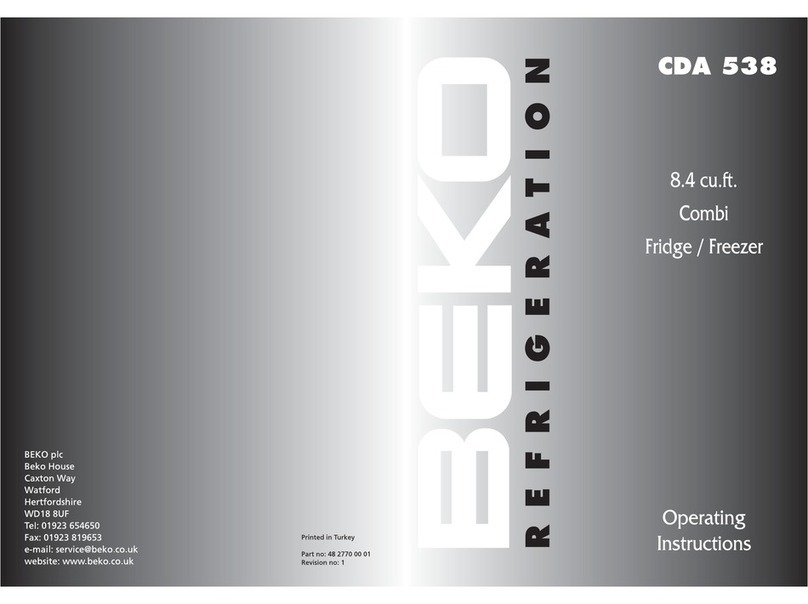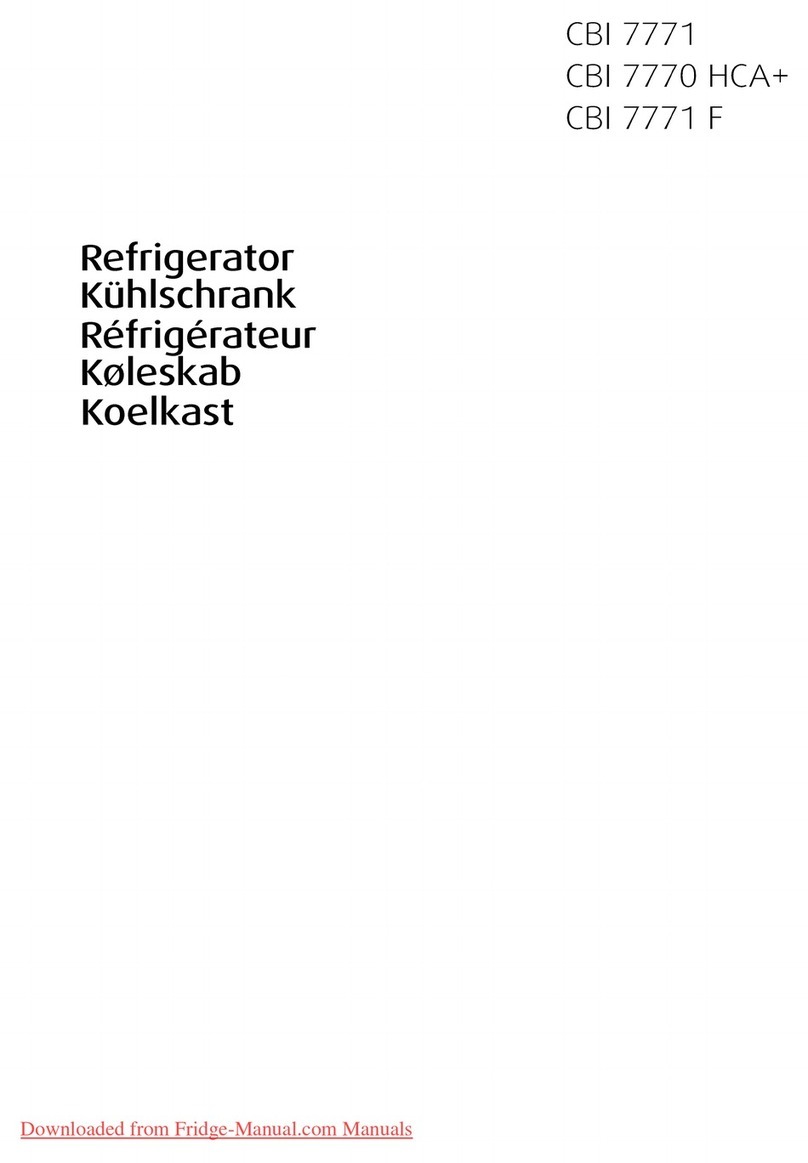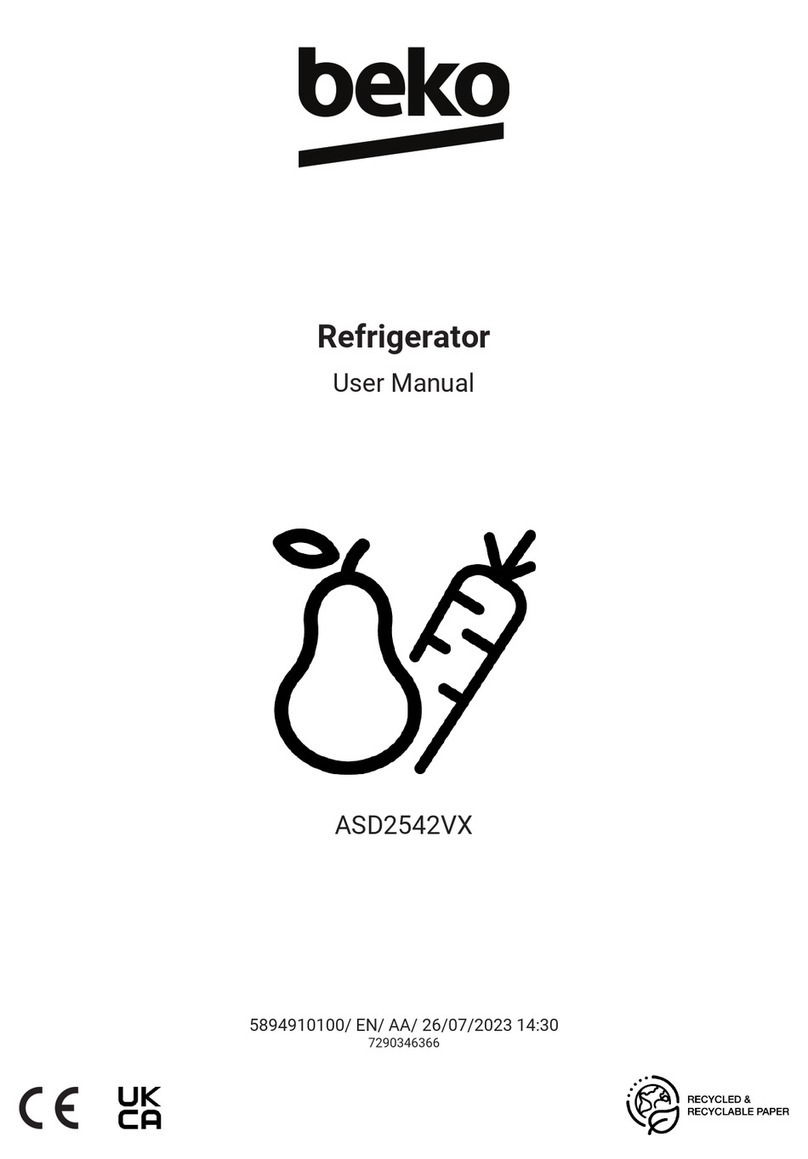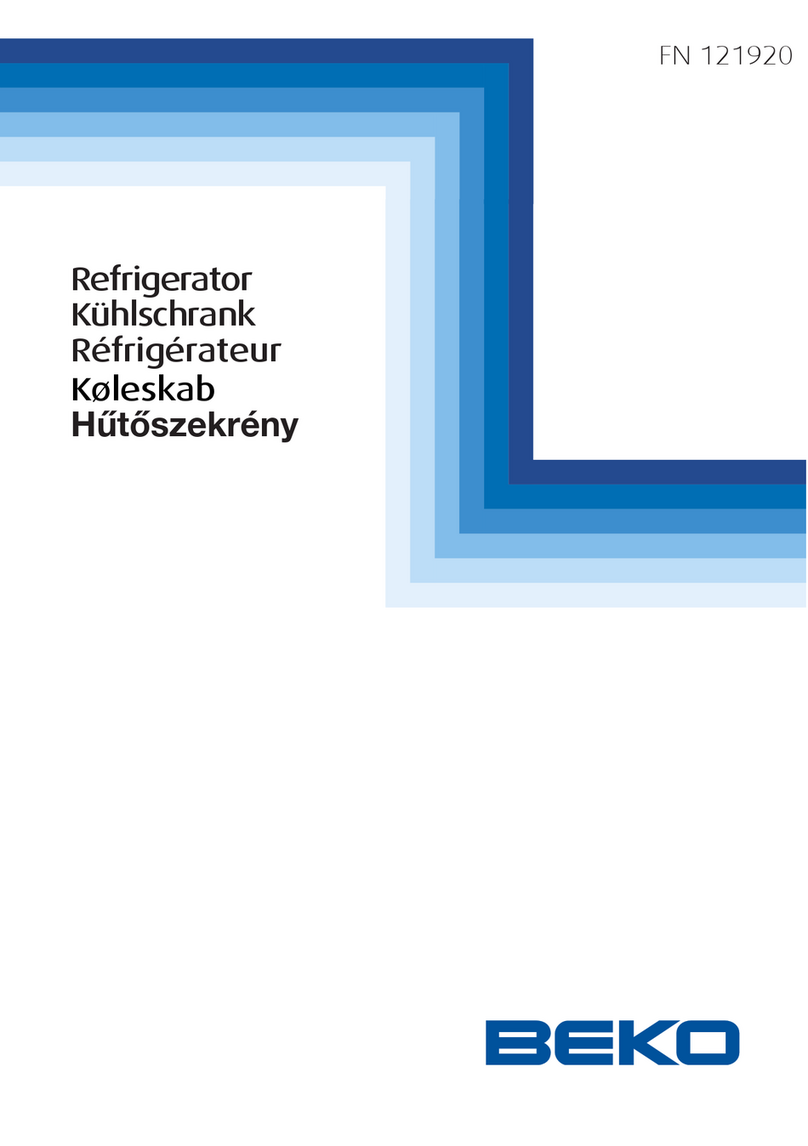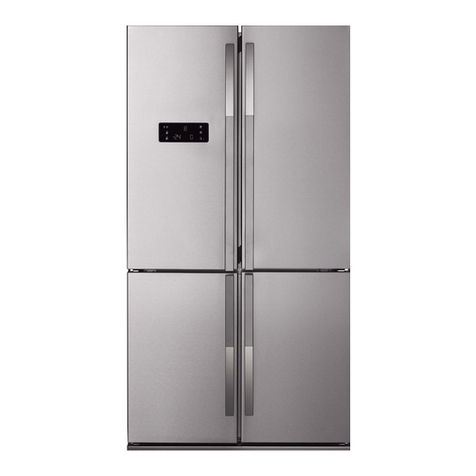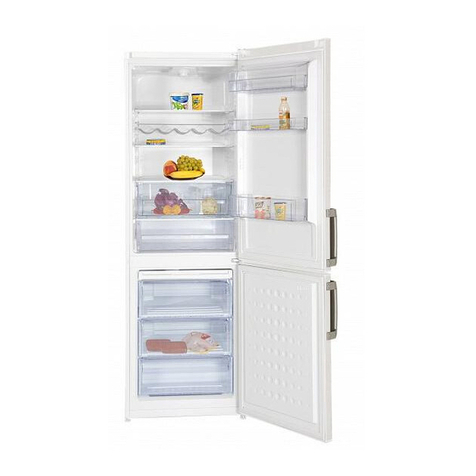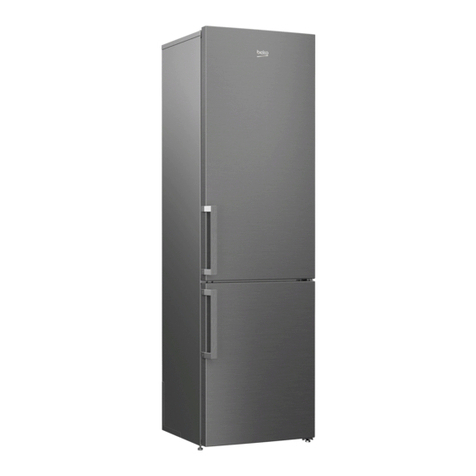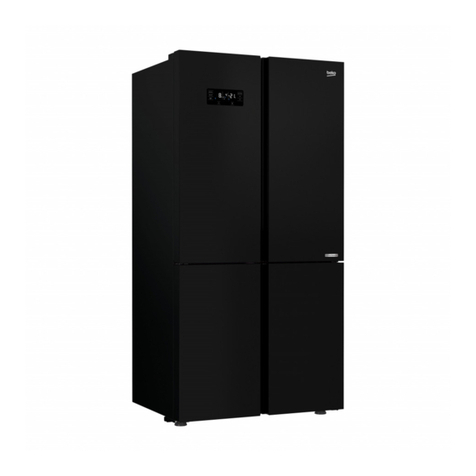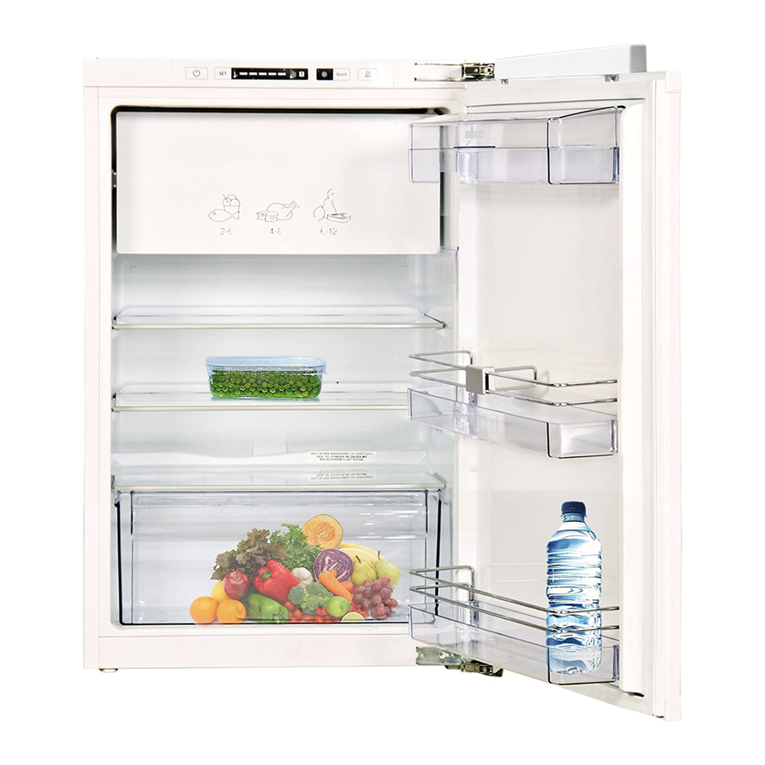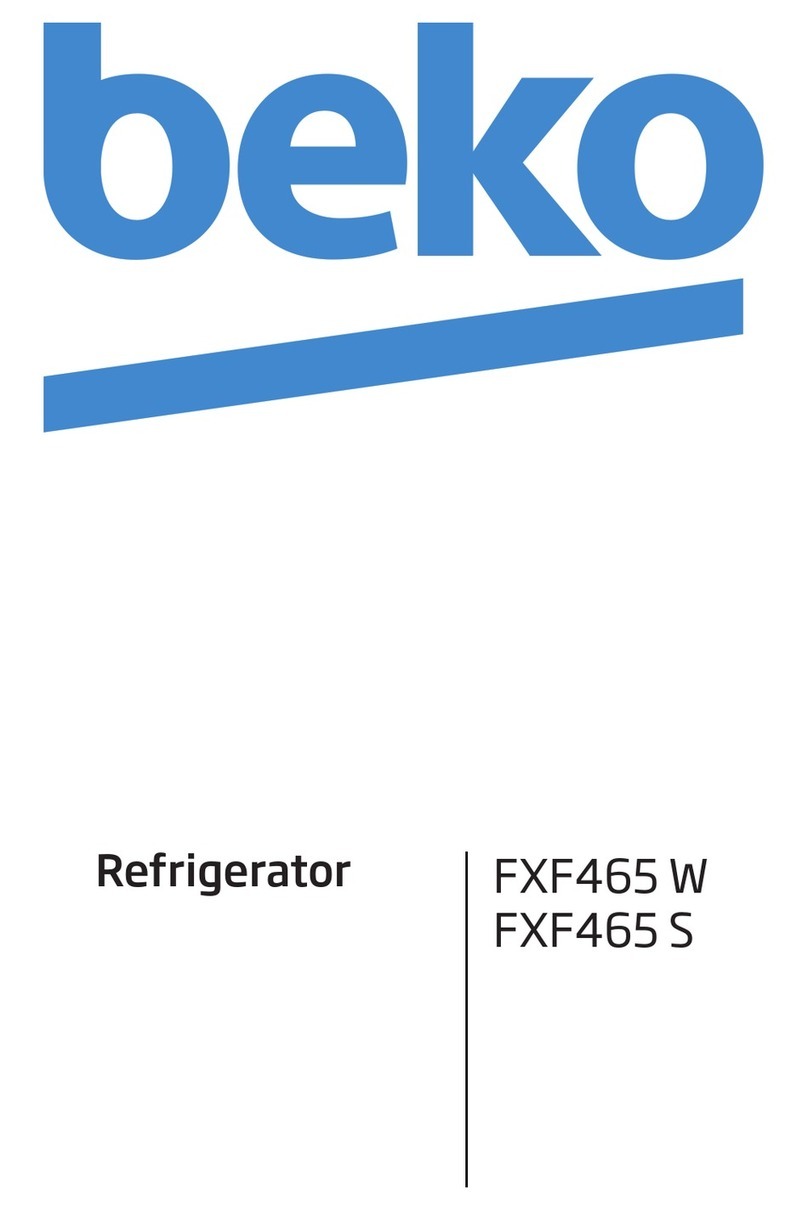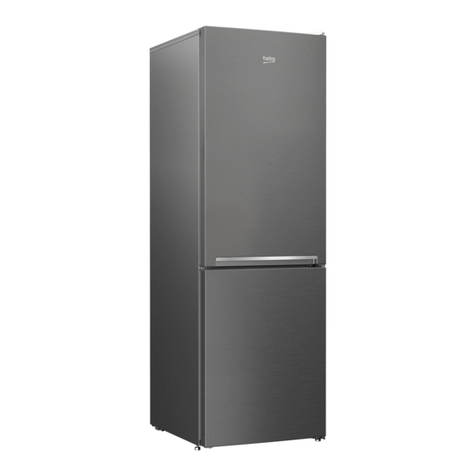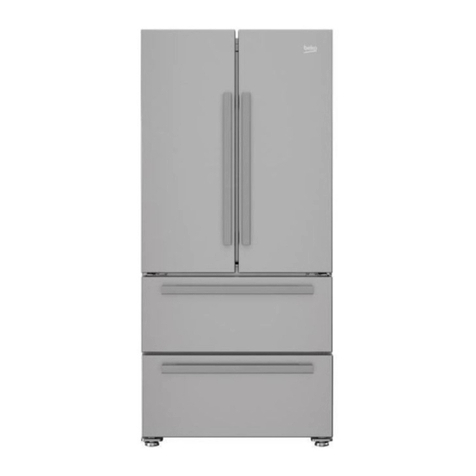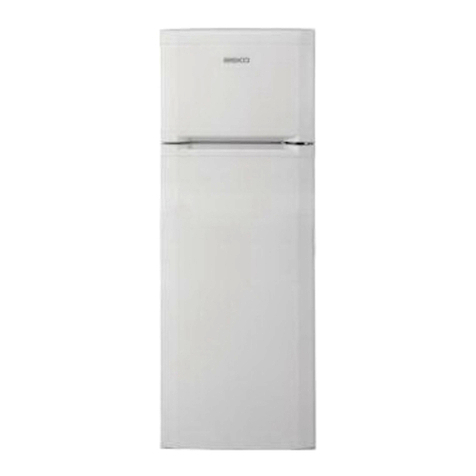Safety precautions
5EN
make any repair on electrical appliances.
Repairs performed by incompetent persons
may create a risk for the user.
• In case of any failure or during a
maintenance or repair work, disconnect your
refrigerator's mains supply by either turning
off the relevant fuse or unplugging your
appliance.
• Be careful not to pull from the cable when
pulling the plug out.
• Electrical safety of your refrigerator shall be
guaranteed only if the earth system in your
house complies with standards.
• Do not allow children play with your
refrigerator. They might harm themselves
and the refrigerator. (E.g. do not allow them
hang from the door.)
• Place the beverage with higher proofs tightly
closed and vertically.
• Flammable items or products that contain
flammable gases (e.g. spray) as well as the
explosive materials should never be kept
in the appliance.
• Do not use mechanical devices or other
means to accelerate the defrosting process,
others than those recommended by the
manufacturer.
• Moving parts such as blades in a
housing at the ice outlet of the
dispenser and in cube ice
compartment, must not be touched to
avoid injury.
This appliance is not intended for use by
persons (including children) with reduced
physical, sensory or mental capabilities,
or lack of experience and knowledge,
unless they have been given supervision
or instruction concerning use of the
appliance by a person responsible for
their safety.
Children should be supervised to ensure
that they do not play with the appliance.
Electrical Safety
This product is designed for indoor use. It is
not appropriate to use it outdoor even if the
place is covered with a roof.
Exposing the product to rain, snow, sun and
wind is dangerous with respect to electrical
safety.
If the connection cable is damaged, it must
be changed by the manufacturer or customer
services in order to avoid potential risks to
you.
This product, included in the newest product
line is particularly environment friendly. Your
product is equipped with a natural cooling
system (R600a) which does not contain CFC
and HFC gases. This gas is flammable.
Therefore, pay attention to not damaging the
cooling system and piping during usage and
transportation. In the event of damage, do not
dispose the product in fire; keep your product
away from potential fire sources that can cause
the product catch a fire and ventilate the room
in which the unit is placed.
• When you want to dispose/scrap the product,
we recommend you to consult the authorized
service in order to learn the required
information and authorized bodies.
• Do not damage the cooling circuit.
• Do not use any electrical tools other than
those recommended by the manufacturer
inside the food storage compartments of the
product.
• Consult your authorized service for all your
questions and problems related to the
refrigerator. Do not intervene or let someone
intervene to the refrigerator without notifying
the authorized services.
• Do not eat cone ice cream and ice cubes
immediately after you take them out of the
freezer compartment! (This may cause frostbite
in your mouth.)
• Do not put bottled and canned liquid
beverages in the freezer compartment.
Otherwise, these may burst.
• Do not touch frozen food by hand; they may
stick to your hand.
• Vapor and vaporized cleaning materials
should never be used in cleaning and
defrosting processes of your refrigerator. In
such cases, the vapor might get in contact
with the electrical parts and cause short circuit
or electric shock.
• Never use the parts on your refrigerator
such as kick plate or door as a means of
support or step.
• Do not use electrical devices inside the
refrigerator.
• Do not operate a damaged refrigerator.
Consult your service if you have any doubts.
• Do not damage the parts, where the
refrigerant is circulating, with drilling or cutting
tools. The refrigerant that might blow out
when the gas channels of the evaporator,
pipe extensions or surface coatings are
punctured may cause skin irritations and eye
injuries.
• Do not cover or block the ventilation holes
on your refrigerator with any material.
• Only authorized service personnel may

